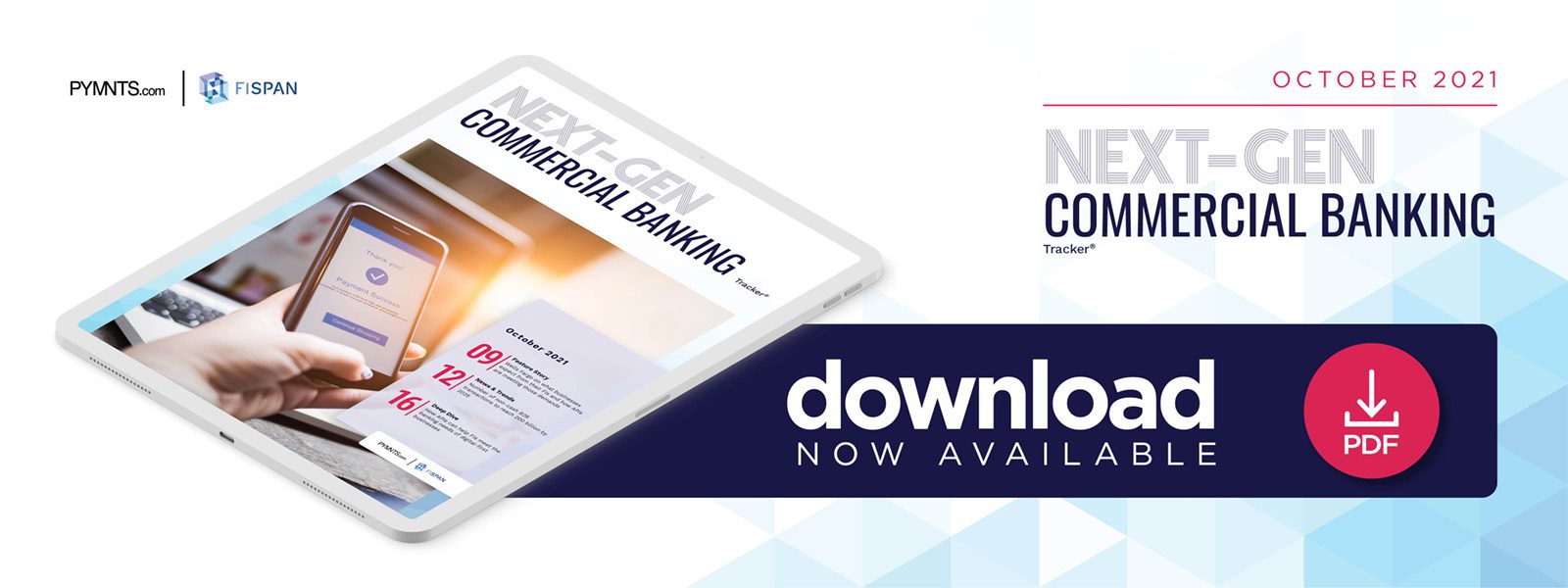Deep Dive: How Banks Can Tap APIs To Meet Shifting Commercial Banking, Payment Expectations

The consumer shift to digital banking already had been in progress for years before the pandemic struck, with many individuals having adopted digital technologies to manage their accounts before the health crisis made it necessary. Businesses have been slower to embrace this shift, and many corporates leaned heavily on manual processes for their business-to-business (B2B) banking operations when social distancing mandates quickly forced an about-face.
Since then, digitization has become a top goal for most companies, with 57% of chief financial officers (CFOs) in a recent PYMNTS study citing digital transformation, not just automation, as the key motive for their current technological investments.
This new imperative presents both a challenge and an opportunity for corporate banks. They now find themselves charged with helping remove accounts payable (AP) and accounts receivable (AR) frictions that their business clients find increasingly intolerable. Still, the forced shift has offered new avenues of growth for seamless banking services.
Banks have moved to innovate their platforms accordingly, turning to technologies such as application program interfaces (APIs) that can forge easy connections between businesses’ digital platforms and their own. For example, in another recent study, 55% of banking and payments executives cited payments infrastructure modernization — including API integration — as an investment priority.
Challenges remain for banks looking to capture corporates’ loyalty, however. The cost of technology and the rapid pace of businesses’ digital pivots can make it difficult for financial institutions (FIs) to meet businesses’ needs.
The following Deep Dive examines how the past year’s events have led to businesses’ mounting frustrations with outdated or manual AP and AR solutions in their B2B payment processes. It also takes a close look at how FIs can tap APIs and related tools to build a bridge between their own systems and businesses’ accounting platforms to streamline B2B processes and remove pain points.
The Shift to Friction-free B2B Banking
Banks aiming to meet businesses’ new B2B payments needs must first recognize how those needs differ from their earlier expectations. Businesses are looking for banking partners that can help them innovate their B2B operations to match both their expanding digital preferences and those of their customers. Companies are growing increasingly frustrated with time-consuming manual payment methods as more consumers and business partners move online, putting outdated AP and AR processes at a severe competitive disadvantage.
Ninety-six percent of CFOs surveyed in a recent PYMNTS study said their main reason for digitizing their AP and AR processes was to benefit their customers and vendors. The same report found that 70% of these executives enhanced their B2B processes to improve their customers’ overall lifetime value or loyalty.
Companies are also looking to improve sales by digitizing their B2B operations and interactions with potential buyers. Forty-one percent of B2B business leaders in one recent survey said eCommerce is now their most effective sales channel. PYMNTS data also found that 83% of CFOs considered lowered operating costs and improved overall efficiency to be two of the main benefits of migrating their B2B processes online.
Making the transition to digital B2B payments may be difficult for companies used to conducting their AP and AR processes through manual channels: in one report, 11% of firms said they were having trouble making the switch to digital treasury. Banks that move quickly to reduce the frustrations companies face during this transformation can boost their business clients’ loyalty.
This is where APIs can offer a critical solution, as they allow corporate FIs to provide a seamless bridge between their own platforms and businesses’ treasury management or enterprise resource planning (ERP) systems.
Building the Next-gen Commercial Banking Bridge
APIs are well-positioned to become the linchpin of the next-gen digital corporate banking world. Banks already turn to these technologies to strengthen their relationships with their business customers. Eighty percent of financial entities in one survey stated they already leverage APIs to allow their corporate clients to access their accounts, conduct currency exchanges, and make domestic and cross-border payments from clients’ own ERP systems.
Research also shows that FIs are well-aware of the key benefits APIs can provide, especially as companies’ expectations of their relationships with banks shift. One-third of European FIs, FinTechs and payment services providers in one recent study were unsure if their current infrastructures were ready to handle future banking needs, for example.
This rising demand for cutting-edge digital solutions also makes the corporate banking playing field more competitive than ever. Nearly half of financial entities in another recent study plan to create API-based financial ecosystems and make the switch to platform-based business models, highlighting the need to innovate swiftly.
FIs must examine their current B2B banking solutions with a critical eye — APIs could be their best strategy for platform innovation to capture companies’ loyalty.

